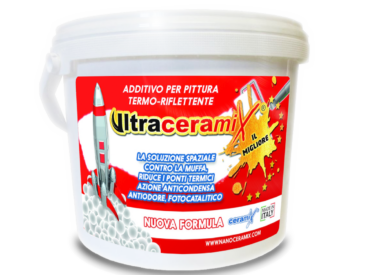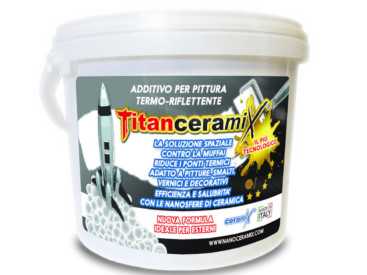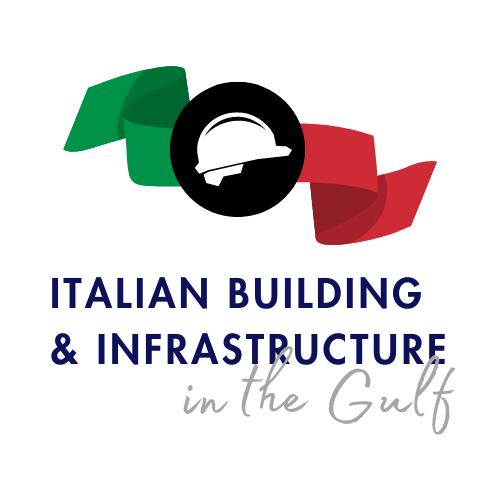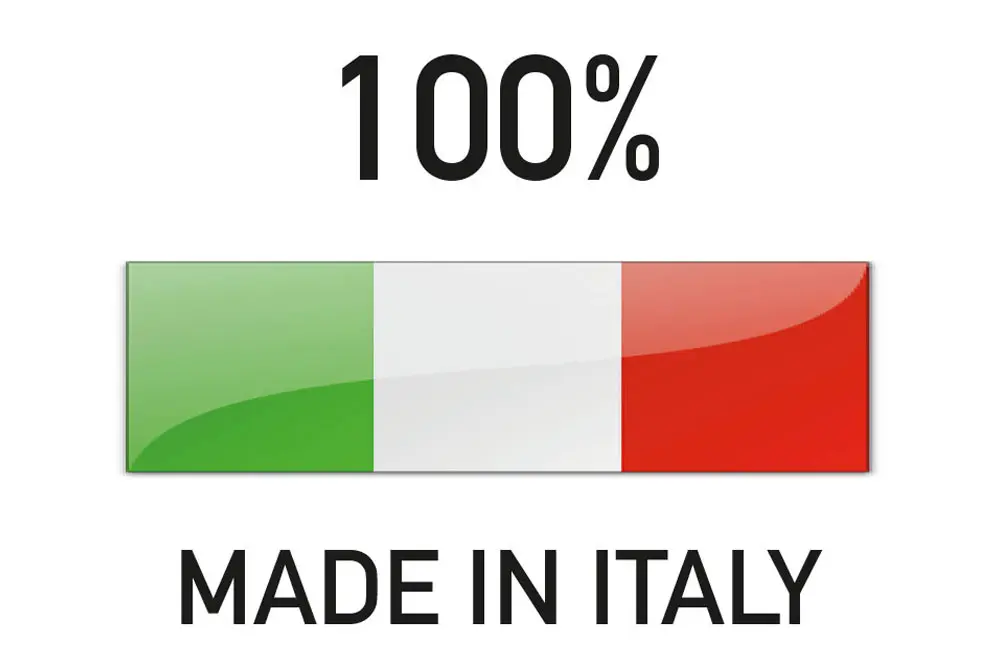How can we stop, or regulate, this continuous heat transfer?
Insulators such as glass wool, cellulose, polystyrene etc. are commonly used to reduce retained heat and block conduction; they do nothing for heat transferred by radiation!
The mass insulating products act by trying to “trap” the heat in the air pockets contained between the fibers of the product. Air is a good insulator against conduction, but it cannot block the radiant heat! Once the insulation becomes saturated after absorbing all the heat it can absorb, the heat is transferred to the walls or ceiling.

During the winter, the interior walls and ceiling absorb a large amount of heat generated by heating.
The heat gets stuck inside the wall at the insulation material, but it could flow out through the invisible joints between the walls and the ceiling, at the pillars, beams, window seals, balconies and other structural elements, especially in the case of incorrect and apparently undetectable thermal bridges.
How can we create a barrier to global heat that prevents the dispersion of heat by acting even before it spreads through the inner walls?
Nanoceramix reflects the output heat inside
Nanoceramix (and all special Insuladd products, and the common paints that contain it as an insulating principle) blocks and reflects the heat before it even crosses the surface of the interior walls.
A normal insulation may have been badly placed or may deteriorate due to humidity. Nanoceramix has the ability to be easily applicable to walls or ceiling in the form of paint additive, to create the insulating barrier, and is also cheap!
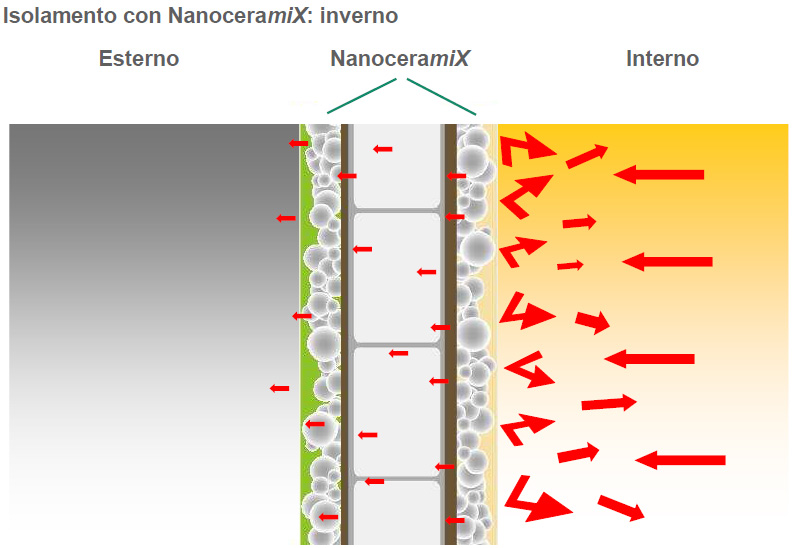
During the cold season, Nanoceramix applied inside blocks and reflects the radiant heat transmitted by stoves, radiators, underfloor heating etc.
The paint evenly covers walls and ceiling, so even at thermal bridges (beams, current pillars, etc.) the effect of thermoreflection is constant.
The problem of summer radiation
The standard insulation reduces the rate (speed) of heat transferred from the walls of a building, but does not allow to regulate the amount of heat transferred.
In fact, the standard insulation, during the summer season, is COUNTERPRODUCTIVE, as a house designed superficially could accumulate all the radiant solar heat absorbed during the day.
It’s obvious that, on sunny days, you can’t get rid of this accumulated heat until late at night.


The amount of heat retained in summer increases indoor temperatures and requires excessive use of air conditioning. The only conventional way to avoid this vicious circle is to design buildings with very thick walls, because the mass helps to stabilize temperatures even in warm climates.
Of course, this leads to higher costs for materials and reduced living space.
Is there a method to protect yourself from the heat in summer without unpleasant compromises?
NanoceramiX è la risposta!
In summer Nanoceramix outside avoids overheating of the walls and keeps the interior of the house cool.
It’s a great way to maximize your home’s energy efficiency.
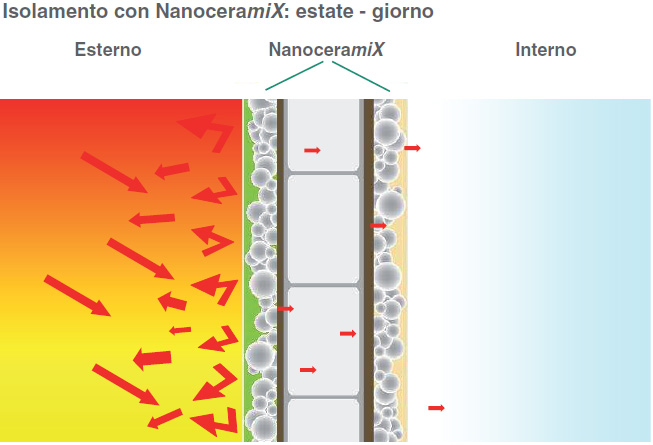
In areas with temperate or torrid climate, the beneficial contribution of Nanoceramix is impressive.
Several measurements show that paintings containing Nanoceramix, applied outside the building, can reflect up to more than 80% of the sun’s rays!
The best ally against the heat
When you want to counteract excessive heat, Nanoceramix proves more effective than traditional insulators, for two reasons:
- the traditional insulator does not easily dispose of the heat and the water vapor accumulated inside during the day, then in hot areas and without air conditioning the sensation of heat remains until late evening; ceramic nanospheres reflect the radiant heat: In summer there is no source of radiant heat lit inside the house, so hot air and water vapor come out through the walls easily and without hindrance.
- the traditional insulator does not easily dispose of the heat and the water vapor accumulated inside during the day, then in hot areas and without air conditioning the sensation of heat remains until late evening; ceramic nanospheres reflect the radiant heat: In summer there is no source of radiant heat lit inside the house, so hot air and water vapor come out through the walls easily and without hindrance.




